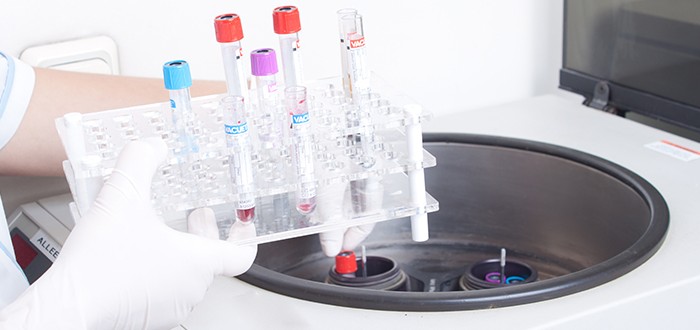Measuring how much activin A is in your bloodstream may be a way to more quickly diagnose mesothelioma. It also may be a way to more quickly tell if it’s the epithelioid, biphasic or sarcomatoid type of mesothelioma.
Knowing which of these types you have is important. It helps your medical team choose the most effective treatments for you.
Doctors want to make sure you are treated with only the mesothelioma drugs and procedures that give you the best chances of achieving long survival.
In addition to being a potential aid to diagnosis, activin A levels may also be an independent prognostic factor in younger mesothelioma patients who have the epithelioid type.
Research on Activin A and Mesothelioma
The scientists who made these findings about activin A hail from a number of research institutions in central Europe and one in Australia. They shared their discoveries in a recent issue of the European Journal of Cancer.
The essence of their findings is that elevated levels of circulating activin A suggest the presence of mesothelioma. However, if the level is in the lower range of elevated, it may mean you have the epithelioid type of mesothelioma.
On the other hand, if the level is in the higher range of elevated it may mean you have either the biphasic or sarcomatoid type of mesothelioma.
The biphasic and, especially, the sarcomatoid types of mesothelioma are more difficult to treat than is the epithelioid type, according to the researchers.
Consequently, biphasic and sarcomatoid mesothelioma patients have less encouraging prognoses, they note.
Studied Plasma from Mesothelioma Patients
Activin A is a transforming growth factor beta (TGF-β) protein. Various biological activities are conducted with an assist from activin.
These activities include cell multiplication, cell metabolism, immune response and apoptosis. Activin also regulates lung morphogenesis.
Results of other recent investigations suggest activin A plays a role in causing cancers of the lung to metastasize.
The authors of this newest study said that activin expression is deregulated in malignant pleural mesothelioma.
The researchers said they developed their ideas about activin A’s role in mesothelioma after studying plasma samples from 129 malignant pleural mesothelioma patients and from 45 healthy individuals.
Among this cohort were 10 patients with the sarcomatoid type of mesothelioma, 23 with the biphasic type and 94 with the epithelioid type. The researchers explained they took measurements of circulating activin A from each of the patients.
Higher Activin A in Mesothelioma Patients
When all the samples were evaluated, the researchers found that plasma activin A levels were appreciably higher in the mesothelioma patients than they were in the control group.
In particular, patients with sarcomatoid and biphasic morphology had the highest activin A levels. Less high activin A was seen in patients with epithelioid histology.
High activin A levels also corresponded with greater tumor volume, the researchers observed.
However, patients with below median activin A levels had a significantly longer overall survival when compared to those with high activin A levels, the researchers indicated.
“Importantly, circulating activin A levels were exclusively prognostic in epithelioid malignant pleural mesothelioma,” they wrote in “Circulating Activin A is a Novel Prognostic Biomarker in Malignant Pleural Mesothelioma — A Multi-Institutional Study.”
The authors were from: Medical University of Vienna, Austria; National Koranyi Institute of Pulmonology in Budapest, Hungary; University Hospital Centre in Zagreb, Croatia; Medical University of Graz in Austria; Semmelweis University in Budapest; Asbestos Disease Research Institute in Sydney, Australia; University Hospital Zurich, Switzerland; and Ruhrlandklinik in Essen, Germany.

